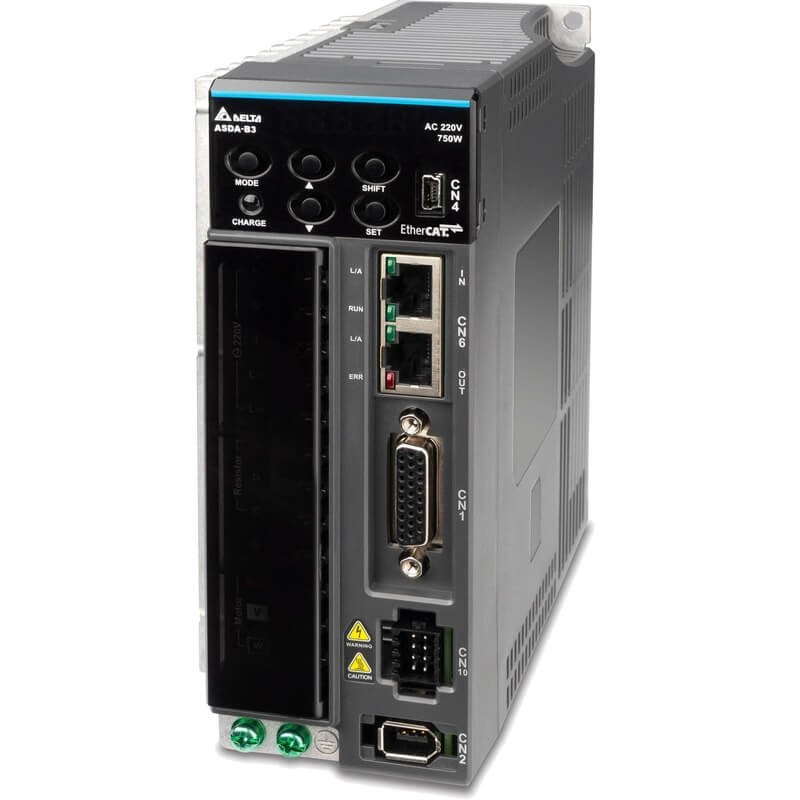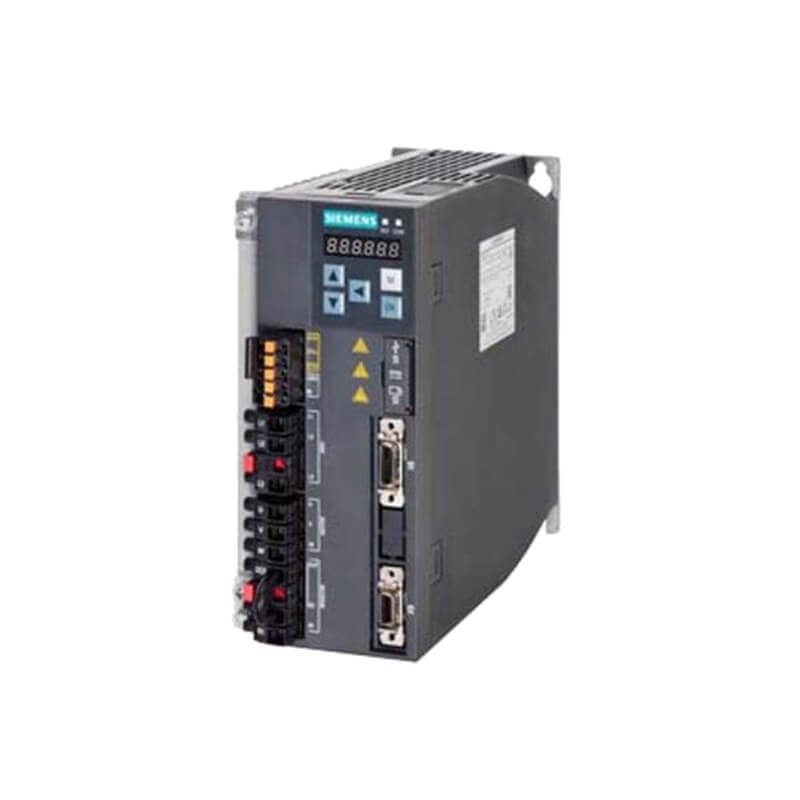
The SIMPHOENIX DX100-4T0110 High Efficiency VFD Frequency Converter, rated at 11kW, stands as a robust solution for precise motor control across various industrial applications. This Variable Frequency Drive (VFD) excels in delivering superior energy efficiency, enhanced process control, and reliable operation. Its core strengths lie in its advanced control algorithms, comprehensive protection features, and user-friendly interface, making it a compelling choice for demanding industrial environments. Key technical specifications include an 11kW power rating, 3-phase 400V input/output voltage, and a wide output frequency range, ensuring adaptability to diverse motor requirements.
| Feature | Specification |
| :------------------ | :------------------------ |
| Model Number | DX100-4T0110 |
| Rated Power | 11kW |
| Input Voltage | 3-Phase, 400V AC |
| Output Voltage | 3-Phase, 0-400V AC |
| Output Frequency | 0-400Hz |
| Control Method | V/f, Vector Control |
| Protection Features | Overload, Overtemperature, Overvoltage, Undervoltage, Short circuit, etc. |
| Mounting Type | Wall/Din Rail Mount |
| IP Rating | IP20 |
Core Features & Market Positioning
The SIMPHOENIX DX100-4T0110 distinguishes itself through its high-efficiency design, contributing significantly to operational cost savings by minimizing energy consumption. Its advanced vector control capabilities provide precise torque and speed regulation, even under fluctuating loads, a critical advantage in applications requiring dynamic performance. This VFD's robust construction and comprehensive suite of protection functions, including overload, over-temperature, and short-circuit protection, ensure operational longevity and reduce the risk of equipment damage. Its positioning in the market reflects a balance of high performance, reliability, and cost-effectiveness, catering to industries seeking dependable motor control solutions without excessive complexity.
Key Application Scenarios
This 11kW frequency converter is ideally suited for a wide array of industrial applications. It finds extensive use in pumps and fans where precise flow or airflow control is paramount, leading to significant energy savings. In material handling systems, such as conveyors and elevators, the DX100-4T0110 enables smooth acceleration and deceleration, extending equipment life and improving operational efficiency. Manufacturing environments benefit from its application in machine tools, processing equipment, and general-purpose motor drives, where accurate speed control is essential for product quality and throughput. The VFD's versatility also extends to HVAC systems, textile machinery, and packaging equipment, demonstrating its broad applicability across different industrial sectors.
Practical System Integration Guidance
Integrating the SIMPHOENIX DX100-4T0110 into existing systems is straightforward due to its standard input/output configurations and intuitive programming interface. For wiring, ensure the main power supply is correctly connected to the input terminals (L1, L2, L3) and the motor to the output terminals (T1, T2, T3), observing proper grounding. Terminal designations for control signals, such as digital inputs for start/stop and speed selection, and analog inputs for speed reference, should be clearly identified in the user manual for accurate connections. Commissioning involves parameter configuration, typically starting with basic motor data (rated power, voltage, frequency, poles) followed by setting control modes (V/f or vector control) and protection limits tailored to the specific application.
Operation and Risk Mitigation
Safe operation of the SIMPHOENIX DX100-4T0110 is ensured through its built-in safety features and adherence to proper installation guidelines. It's crucial to ensure the VFD is installed in a well-ventilated area to prevent overheating, and that all electrical connections are secure and insulated. The VFD incorporates numerous protection functions, including overcurrent, overvoltage, undervoltage, and motor overload, which will trigger a fault code if a condition is met. For example, an "Overload Fault" (often indicated by a specific code like F05) requires investigating the motor load and ensuring it does not exceed the VFD's capacity. Always refer to the product manual for a complete list of fault codes and their corresponding troubleshooting procedures to mitigate operational risks effectively.
Scalability & Long-Term Value
The SIMPHOENIX DX100-4T0110 offers considerable long-term value through its robust design and compatibility with evolving industrial automation trends. While not explicitly detailed for upgrade paths, the inherent modularity of VFD technology suggests potential for integration into larger control systems. Its adherence to standard communication protocols, if supported, allows for seamless connection with PLCs and SCADA systems, paving the way for IIoT integration and enhanced data monitoring capabilities. This VFD's high efficiency and reliability also translate to reduced maintenance costs and extended equipment lifespan, contributing to a favorable return on investment over the unit's operational life.
Frequently Asked Questions
Q1: What are the primary benefits of using the SIMPHOENIX DX100-4T0110 VFD?
This VFD offers significant energy savings by precisely controlling motor speed and reducing power consumption when full speed is not required. It enhances process control accuracy, allowing for smoother operation and improved product quality through precise speed and torque regulation. The drive's robust protection features safeguard connected equipment from electrical faults, thereby minimizing downtime and maintenance costs.
Q2: Can the SIMPHOENIX DX100-4T0110 be used with single-phase motors?
No, the SIMPHOENIX DX100-4T0110 is specifically designed for 3-phase motor applications. It requires a 3-phase input power supply and outputs 3-phase power to drive a 3-phase motor. Using it with single-phase motors is not supported and could lead to equipment damage or malfunction.
Q3: What is the typical input voltage range for this VFD?
The SIMPHOENIX DX100-4T0110 operates with a standard 3-phase AC input voltage. It is designed to accept voltages within the 400V AC range, common in industrial power systems. Always verify your local power supply specifications to ensure compatibility before installation.
Q4: How does the VFD ensure motor protection?
The VFD incorporates multiple built-in protection functions to prevent damage to the motor and the drive itself. These include overload protection, overvoltage and undervoltage protection, short-circuit protection, and over-temperature monitoring. These features automatically shut down the drive when a fault condition is detected.
Q5: What is the maximum output frequency of the DX100-4T0110?
The SIMPHOENIX DX100-4T0110 can provide an output frequency range from 0Hz up to 400Hz. This wide range allows for precise speed adjustment of the connected motor, catering to applications requiring speeds both below and significantly above the motor's base speed.
Q6: Is this VFD suitable for harsh industrial environments?
With an IP20 rating, the DX100-4T0110 is suitable for many industrial settings but is protected against solid objects larger than 12.5mm and offers no protection against water. For extremely dusty or wet environments, external enclosures or higher IP-rated VFDs might be necessary.
Q7: What are the different control methods supported by this VFD?
The SIMPHOENIX DX100-4T0110 supports both V/f (Volts per Hertz) control and sensorless vector control. V/f control is simpler and suitable for constant torque loads, while vector control offers superior dynamic performance, precise speed regulation, and better torque control, especially for variable torque applications.
Q8: How can I program the parameters for a new application?
Programming involves accessing the VFD's control panel or using dedicated software. Key parameters to configure include motor rated power, voltage, frequency, current, number of poles, and desired control mode (V/f or vector). Referencing the user manual for specific parameter groups and sequences is crucial.
Q9: What kind of troubleshooting should I perform for common fault codes?
Common fault codes, like overload or overcurrent, typically indicate an issue with the motor load or a potential wiring problem. Troubleshooting involves checking the motor's mechanical load, ensuring the motor is not stalled, and verifying all electrical connections are secure and correctly made according to the manual.
Q10: Can this VFD be integrated into an industrial automation network?
Yes, many VFDs, including potentially this model, can integrate into industrial networks through optional communication modules. Protocols like Modbus, Profibus, or Ethernet/IP can be supported, allowing for remote monitoring, control, and diagnostics within a PLC-based system or SCADA environment.

























